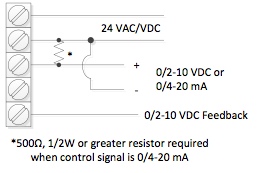As our government quickly approaches the next big political showdown over US deficit reduction measures, constituencies across the spectrum are offering wide-ranging solutions to fix what ails our seemingly incessant poor fiscal standings. One such set of recommendations near and dear to my heart and profession relates to energy efficiency. The proposal to which I’m referring comes from the American Council for an Energy-Efficient Economy (ACEEE) and I believe it has a strong chance of providing common ground for lawmakers bitterly divided between strategies of revenue growth and budget reductions. Their plan calls for both in a manner that pays for itself in energy savings and economic productivity gains.
ACEEE’s research report E132 entitled, Tax reforms to advance energy efficiency lays out six key reforms in a revised tax code:
1) Refine depreciation periods to more accurately reflect the service lives of equipment – For example, major equipment systems in commercial buildings currently have a mandated depreciation schedule of 39 years while the average actual lives of these systems are 15-25 years. This variance acts as a barrier to new investments in advanced energy saving technology.
2) Refine existing energy efficiency laws – Promote market transformation toward energy efficiency by offering temporary tax incentives with a preset phase out lifespan for energy efficient appliances, homes, commercial buildings and for energy saving retrofits.
3) Promote capital investment in manufacturing – Provide various tax incentives to manufacturer’s looking to invest in more energy efficient production equipment and processes.
4) Add a price on emission – Increase revenues through a tax aimed to reduce the externalities (i.e., negative economic factors) of carbon pollution and lower taxes on productive economic activities (e.g., wages and corporate profits).
5) Remove disincentives to energy efficiency investment from the business tax code – Under the current business tax code, all energy expenses are tax deductible thus giving a larger “reward” to those businesses that use energy wastefully versus those who work to minimize their energy use through investments in efficiency. One way to address this might be to tax revenues versus profits (i.e., income net of operating expenses like energy costs) but at a much lower rate thereby removing the “incentive” to be less energy efficient.
6) Eliminate or reduce subsidies that target the fossil fuel industry – Promote the creation of a more “level” playing for emerging efficiency technologies that will advance the energy industry as a whole and give US manufacturers of this technology a competitive edge.
These are highlights of ACEEE’s report and ones well worth our legislators’ consideration. Energy efficiency is at the heart of the building automation industry and our industry (including Kele) stand to gain a great deal if measures such as these gain adoption into our tax code. But as our industry benefits, so do all Americans through lower energy bills, a stronger overall economy and a cleaner and healthier environment. Here’s to a smarter tax code that supports a more efficient future for us all.
If you are interested in the details, here is a link to the full ACEEE report, http://aceee.org/research-report/e132


